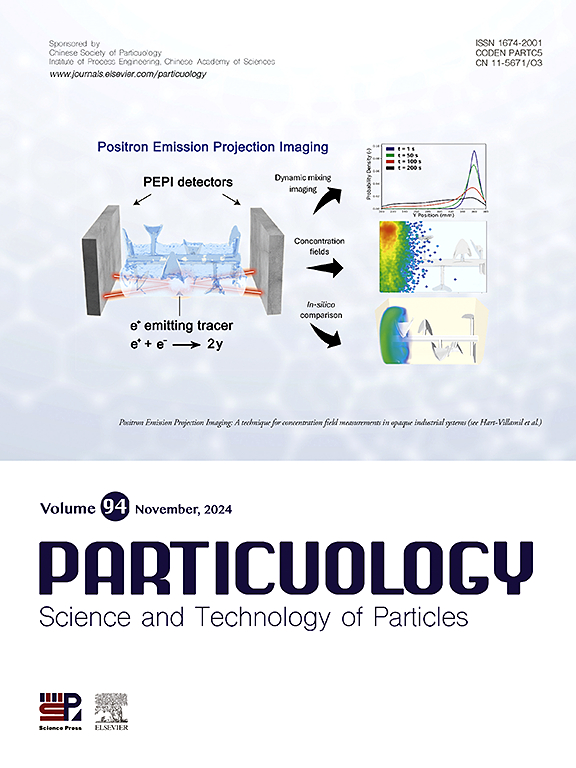Collagen-reinforced polystyrene/polycaprolactone membranes with nickel oxide nanoparticles: Enhanced mechanical, thermal, and antibacterial properties for antibacterial applications
IF 4.1
2区 材料科学
Q2 ENGINEERING, CHEMICAL
引用次数: 0
Abstract
Electrospinning technology was employed to fabricate a novel composite membrane integrating collagen from Peruvian squid skin with polystyrene (PS), polycaprolactone (PCL), and green-synthesized nickel oxide (NiO) nanoparticles (PS/PCL/CO/NiO). The addition of collagen (CO) and NiO nanoparticles significantly enhanced the membrane's hydrophobicity, as evidenced by an increase in the water contact angle from 124.8 ± 0.6° to 131.2 ± 1.2°. Mechanical properties showed substantial improvement, with tensile strength increasing by 86% (from 5.05 ± 1.6 MPa to 9.39 ± 1.4 MPa) and elongation at break improving by 48% compared to conventional NiO membranes. Thermal analysis indicated increased stability, with a higher endothermic peak and an enthalpy increase from 6.885 J/g to 8.584 J/g. Antibacterial assays revealed strong efficacy against Escherichia coli and Staphylococcus aureus, reducing bacterial growth by over 90%. The enhanced hydrophobicity, mechanical strength, thermal stability, and antibacterial activity of PS/PCL/CO/NiO membranes make them highly promising for applications in tissue engineering, wound dressings, and water treatment.

胶原蛋白增强聚苯乙烯/聚己内酯膜与氧化镍纳米颗粒:增强机械,热和抗菌性能的抗菌应用
采用静电纺丝技术,将秘鲁鱿鱼皮胶原蛋白与聚苯乙烯(PS)、聚己内酯(PCL)、绿色合成的氧化镍(NiO)纳米粒子(PS/PCL/CO/NiO)结合制备了新型复合膜。胶原(CO)和NiO纳米颗粒的加入显著增强了膜的疏水性,水接触角从124.8±0.6°增加到131.2±1.2°。与传统NiO膜相比,拉伸强度提高了86%(从5.05±1.6 MPa提高到9.39±1.4 MPa),断裂伸长率提高了48%。热分析表明其稳定性增强,吸热峰增大,焓从6.885 J/g增加到8.584 J/g。抑菌试验显示对大肠杆菌和金黄色葡萄球菌有较强的抑菌效果,可减少细菌生长90%以上。PS/PCL/CO/NiO膜具有较强的疏水性、机械强度、热稳定性和抗菌活性,在组织工程、伤口敷料和水处理等领域具有广阔的应用前景。
本文章由计算机程序翻译,如有差异,请以英文原文为准。
求助全文
约1分钟内获得全文
求助全文
来源期刊

Particuology
工程技术-材料科学:综合
CiteScore
6.70
自引率
2.90%
发文量
1730
审稿时长
32 days
期刊介绍:
The word ‘particuology’ was coined to parallel the discipline for the science and technology of particles.
Particuology is an interdisciplinary journal that publishes frontier research articles and critical reviews on the discovery, formulation and engineering of particulate materials, processes and systems. It especially welcomes contributions utilising advanced theoretical, modelling and measurement methods to enable the discovery and creation of new particulate materials, and the manufacturing of functional particulate-based products, such as sensors.
Papers are handled by Thematic Editors who oversee contributions from specific subject fields. These fields are classified into: Particle Synthesis and Modification; Particle Characterization and Measurement; Granular Systems and Bulk Solids Technology; Fluidization and Particle-Fluid Systems; Aerosols; and Applications of Particle Technology.
Key topics concerning the creation and processing of particulates include:
-Modelling and simulation of particle formation, collective behaviour of particles and systems for particle production over a broad spectrum of length scales
-Mining of experimental data for particle synthesis and surface properties to facilitate the creation of new materials and processes
-Particle design and preparation including controlled response and sensing functionalities in formation, delivery systems and biological systems, etc.
-Experimental and computational methods for visualization and analysis of particulate system.
These topics are broadly relevant to the production of materials, pharmaceuticals and food, and to the conversion of energy resources to fuels and protection of the environment.
 求助内容:
求助内容: 应助结果提醒方式:
应助结果提醒方式:


